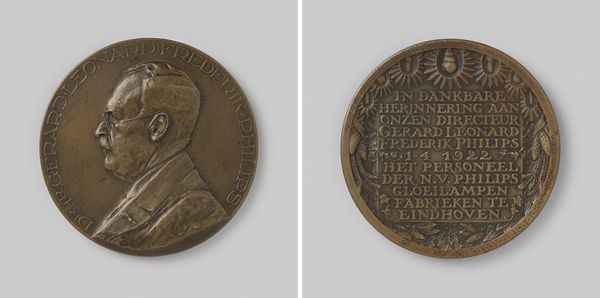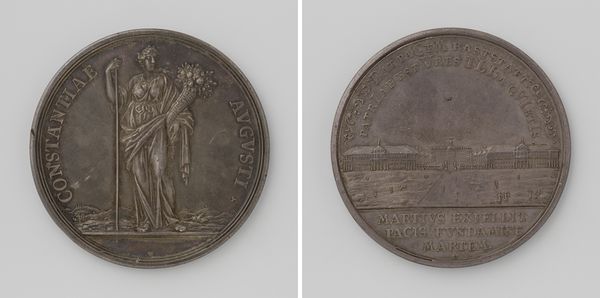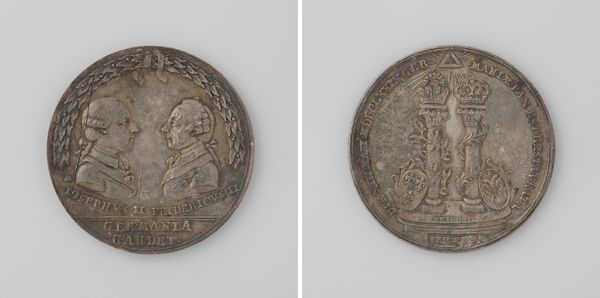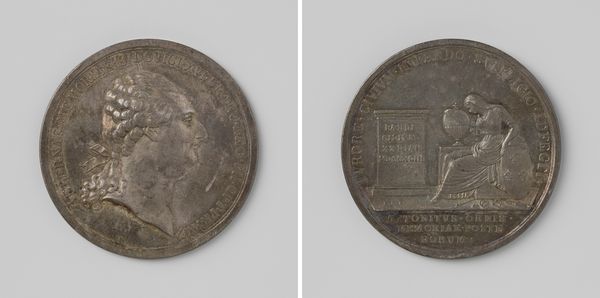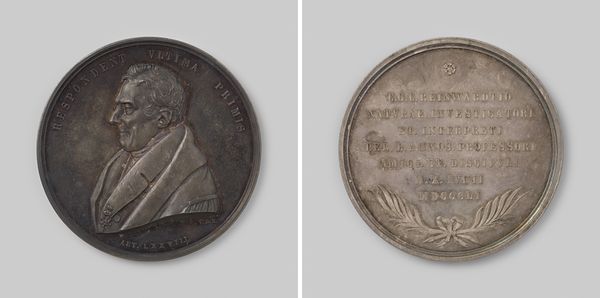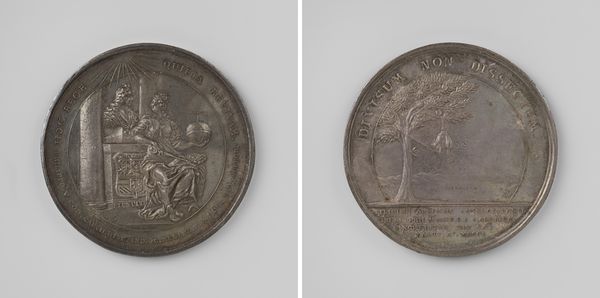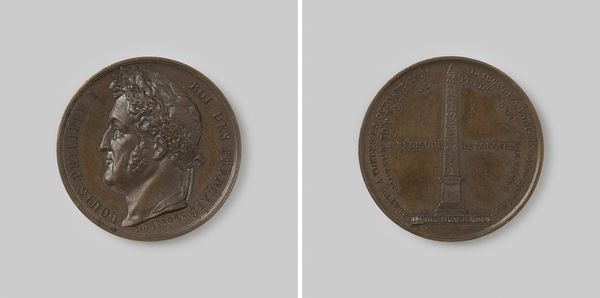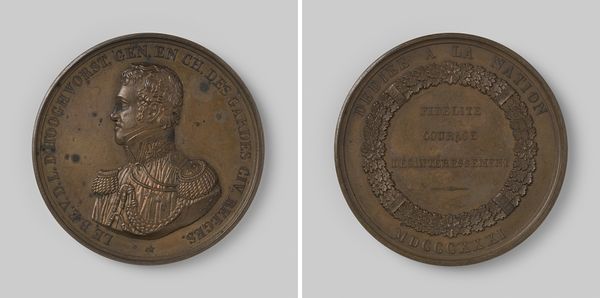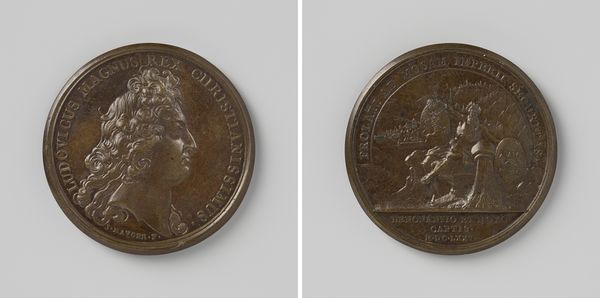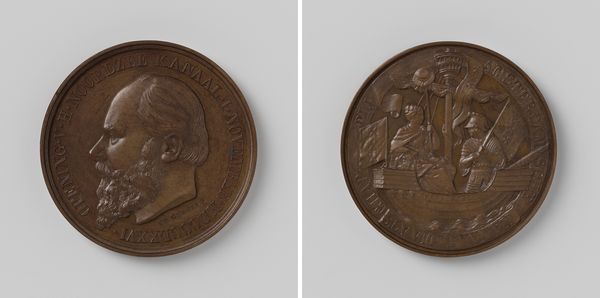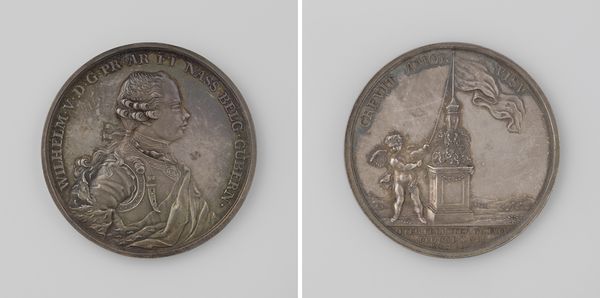
metal, relief
#
portrait
#
baroque
#
metal
#
sculpture
#
relief
#
sculptural image
#
history-painting
Dimensions: diameter 4.8 cm, weight 47.63 gr
Copyright: Rijks Museum: Open Domain
Editor: Here we have “Overlijden van Pasquier Quesnel, priester van het Oratoire te Parijs,” or “The Death of Pasquier Quesnel, Priest of the Oratory in Paris,” made in 1719 out of metal. It depicts a somber portrait and what appears to be an urn. What do you see in this piece? Curator: This medal offers a window into the complex religious and political landscape of the early 18th century. Quesnel was a prominent figure in the Jansenist movement, which challenged papal authority and advocated for a more austere form of Catholicism. Can you see the restrained Baroque style typical of depicting historical figures? The urn is powerful as it transcends its visual purpose and makes us question the legacy of Quesnel in religious history. Editor: So the choice of metal and the form of a medal were deliberate? Curator: Absolutely. Metal, unlike a painting, allows for multiples, hinting at how medals like this served as propaganda for Quesnel's admirers, circulating his image and message after his death, keeping the movement and debates around Jansenism alive. Does seeing it as a disseminated message shift how you view its role? Editor: Definitely. It's not just a memorial; it's an assertion of his continued influence and maybe defiance. I’m also interested in how these smaller objects contribute to shaping narratives about historical figures. Curator: Precisely. Material culture, even in small forms, can amplify marginalized voices and challenge dominant narratives. Editor: Thanks, I’ll certainly have to remember that as I’m researching! I learned so much.
Comments
No comments
Be the first to comment and join the conversation on the ultimate creative platform.
